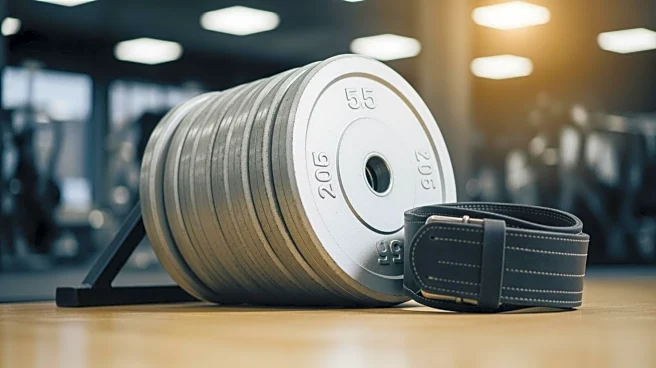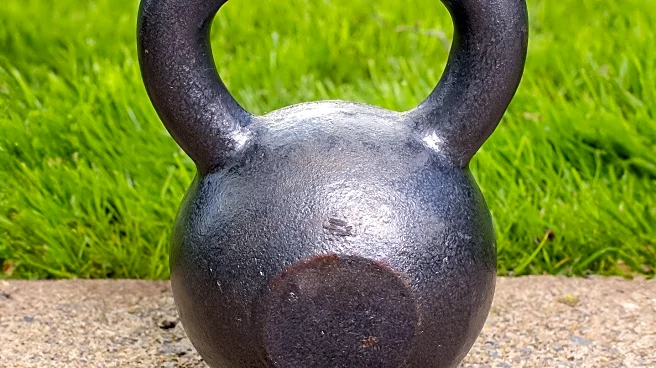What's Happening?
An experienced exerciser developed rhabdomyolysis after a kettlebell workout, despite being familiar with the exercise routine. The incident occurred during the summer of 2020 when the individual noticed unusual symptoms, including dark urine, following
a workout with kettlebells. Having previously used kettlebells as a primary form of exercise, the individual had taken a break and was easing back into the routine. The workout involved one-minute intervals of swings, squats, and presses with weights ranging from 14kg to 20kg. Despite feeling soreness, the individual continued with other activities, only to later discover elevated creatine kinase levels, indicating muscle damage. Rhabdomyolysis, a condition where muscle tissue breaks down and releases harmful substances into the bloodstream, can lead to serious complications such as kidney damage. The individual was hospitalized and treated to prevent renal failure, underscoring the importance of recognizing the body's limits and the potential dangers of high-intensity workouts.
Why It's Important?
This case highlights the risks associated with high-intensity workouts, even for experienced individuals. Rhabdomyolysis, though not common, poses significant health risks, including kidney damage, and can occur when individuals push their bodies beyond their limits. The incident serves as a cautionary tale for fitness enthusiasts and underscores the importance of listening to one's body and incorporating adequate rest and recovery into exercise routines. With the rise in popularity of high-intensity workouts, such as cycling classes, there has been an observed increase in rhabdomyolysis cases, emphasizing the need for awareness and preventive measures. Fitness professionals and healthcare providers may need to educate individuals on the signs of overexertion and the importance of gradual progression in exercise intensity.
What's Next?
The individual involved in the incident has adopted a new approach to exercise, focusing on matching workouts to current ability and prioritizing rest days. This shift in mindset may serve as a model for others in the fitness community, encouraging a balance between pushing for gains and avoiding injury. Healthcare providers and fitness trainers might consider developing guidelines to help individuals recognize the signs of overexertion and adjust their routines accordingly. As awareness of exercise-induced rhabdomyolysis grows, there may be increased efforts to monitor and prevent such cases, particularly in high-intensity fitness environments.
Beyond the Headlines
The incident raises broader questions about the culture of fitness and the pressure to perform at high levels. It challenges the notion that more intense workouts always lead to better results, highlighting the importance of personalized fitness plans that consider individual health and capacity. The case also underscores the need for a shift in how fitness success is measured, potentially moving towards a more holistic approach that values health and well-being over sheer physical achievement.













